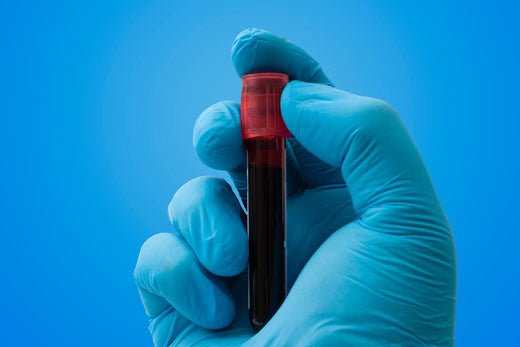Hemoglobin A1C (HbA1C), more simply written as A1C, is a marker that is measured to assess how well the body is disposing of blood glucose or blood sugar during the previous approximately 3 months. Hemoglobin is a protein found in red blood cells that transports oxygen and carries it throughout the body. Glucose (sugar) also attaches itself to hemoglobin in red blood cells — which makes it easy to measure through a blood test known as the HbA1C test, glycohemoglobin test, or glycated hemoglobin test [1].
What Is the Purpose of an A1C Test?
An A1C test can be performed at any time of the day without having to fast or drink a specific liquid. The results are used to identify problems of blood sugar regulation, particularly whether the body’s cells are slowly becoming resistant to insulin or the pancreas is not producing enough insulin [1, 2]. This test is also used to diagnose individuals with elevated blood sugar, which refers to high levels of blood sugar the body struggles to balance on its own [1-3]. People who require treatment for high blood sugar, may also be asked to take an A1C test regularly to determine how well the treatment plan is working.
A1C test results are reported as a percentage that reflects average blood sugar levels over the past three months. The more sugar (glucose) that remains in your bloodstream, the more sugar will attach to hemoglobin. This means that the higher the percentage of A1C, the higher your blood sugar has been over the past couple of months.
In healthy individuals, the pancreas begins to release insulin in response to rising blood sugar levels after eating. Insulin signals cells to begin removing sugar from the blood in order to use it for energy or store it for later. If the pancreas does not produce insulin properly or cells respond inappropriately to insulin, sugar levels in the blood will begin to rise. This issue may lead to uncontrolled (high) blood sugar if it is not addressed.
If your healthcare provider suspects that you may be struggling with high blood sugar problems, you may be asked to take an A1C test.
A Closer Look at A1C Results and What the Percentages Mean
A1C results or percentages are divided into the following three categories:
- Normal — below 5.7 percent
- Abnormal blood sugar regulation — 5.7 to 6.4 percent
- Uncontrolled (high) blood sugar — 6.5 percent or above
If an A1C test indicates that your body’s insulin signaling system is impaired or that you already have high blood sugar, a second A1C test or a different type of test will be performed to confirm the results [1, 4, 5].
One of the most common tests that helps confirm a previous diagnosis is the fasting plasma (blood) glucose test, which provides an impression of blood sugar regulation when an individual has not eaten overnight. Moderate to high fasting blood sugar levels (on an empty stomach) indicates abnormal insulin signaling. This issue increases the risk of uncontrolled blood sugar levels [5].
There are often no clear signs of high blood sugar until insulin resistance is well established. The most common subjective signs of high blood sugar are excessive thirst (polydipsia) and frequent urination (polyuria). If a healthcare provider believes that you may be experiencing this problem, it is important to take an A1C test. The results may help you make important changes that can prevent more serious complications.
References
- Sherwani S, Khan HA, Ekhzaimy A, et al. Significance of HbA1c Test in Diagnosis and Prognosis of Diabetic Patients. Biomark Insights. 2016;11:95-104.
- Ahmed AM. History of diabetes mellitus. Saudi Med J. 2002;23:373-8.
- Ohtsubo K, Chen MZ, Olefsky JM, Marth JD. Pathway to diabetes through attenuation of pancreatic beta cell glycosylation and glucose transport. Nat Med. 2011;17:1067-75.
- Khan HA, Ola MS, Alhomida AS, Sobki SH, Khan SA. Evaluation of HbA1c criteria for diagnosis of diabetes mellitus: a retrospective study of 12785 type 2 Saudi male patients. Endocr Res. 2014;39:62-6.
- American Diabetes Association (ADA) Standards of medical care in diabetes. Diabetes Care. 2014;37:S14-80.

